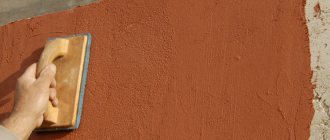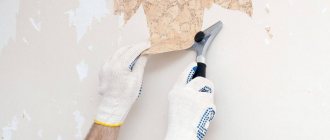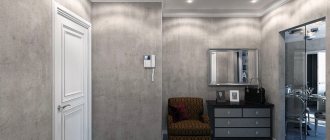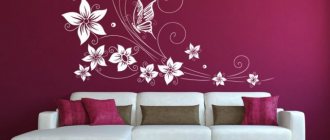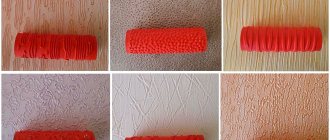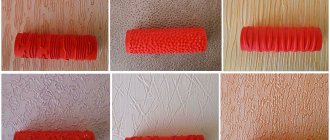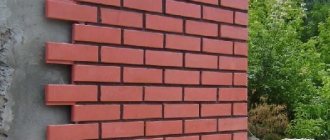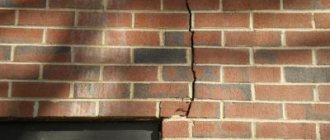The word "plaster" comes from the Italian "stuccatura" (plastering). Previously, gypsum and alabaster were used as the basis for the mixture. There are many more substances being used now. The material is applied to the working surface itself. In this case, it is not necessary to erect lattice and frame structures. This construction work is carried out both on a bare wall and with the use of an additional layer of thermal insulation.
Adding a decorative layer allows you to create expressive patterns on the walls. Such work, as it may seem, requires great skill from a specialist in this field. This is not entirely true. You can achieve the desired layer with your own hands. Yes, it is more reliable to trust such work to craftsmen, but the main role in plastering is played not so much by the skill of a specialist, but by the material itself. It consists of special substances: fillers. These substances help create an unusual pattern on the wall. What are the types of decorative plasters and facade finishing options? How to choose the right option? Answers to such questions will allow you to efficiently plaster the facades of houses.
Pros and functions of facade plaster
Protects the load-bearing walls of the house from blowing and precipitation
As a rule, silicone-based plaster mixtures are used for facades, which create a dense, solid film that prevents blowing in windy climates and walls from getting wet during heavy rains. Almost any wall material, when constantly exposed to precipitation, becomes saturated with moisture and, as a result, swells or crumbles, depending on its physical properties. In windy and rainy climates, silicone-based plasters will protect walls and insulation well.
Of course, external plaster will not protect against the occurrence of dew point inside a load-bearing wall, but by using dry plaster to install a ventilated façade, excess moisture accumulation can be avoided.
a single layer of facade plaster protects load-bearing walls from blowing and precipitation
Durability of finishing
On average, the durability of facade plasters, with proper installation, varies from 20 years. That is, if the house does not undergo severe shrinkage, the facade has not been subjected to serious mechanical damage, then the integrity of the plaster layer will be maintained for the entire declared period of time and retain its functions.
plaster retains its strength for many years; over time, you just need to update the paint color
Allows you to eliminate cracks and structural deficiencies in the rough walls of the house
When applying wet facade plaster, without external insulation, the mixture penetrates deeply into the structure of the walls, fills all the cracks, chips, and holes in the brick, further enhancing the strength and integrity of the wall.
If it is necessary to install plaster on the insulation, both with a dry and wet facade, all damage is hidden by the insulation. It also prevents, together with the subsequent plaster layer, the penetration of moisture, wind and other destructive influences through cracks and working damage to the wall material.
plaster allows you to eliminate imperfections and cracks in masonry walls
Moves the dew point outside the walls of the house
This effect is achieved by creating a special wall cake using insulation for a wet facade. When installing dry plaster, in addition to the insulation layer, a ventilated gap is also created in the wall layer, which helps remove moisture from the wall cake. Thus, the condensate that forms due to temperature changes settles not in the structure of the load-bearing wall, but outside it, for example, in the insulation. However, for this it is necessary to correctly calculate the thickness of the wall pie, taking into account the material of the house box.
For details on how to correctly calculate the dew point for a house, see the article: “Dew point in construction. Calculation of the dew point and its harm to the wall"
Lightweight finish
In comparison with facing brickwork, many types of siding and other materials, plastering the facade practically does not load the foundation. A thin layer of plaster does not create additional load on the walls and will practically not increase the weight of the house. Of course, there are exceptions when it is necessary to apply a thick layer of plaster from 5 cm more using heavy stone chips, but this is the exception rather than the rule.
Stability of texture and color
The structure of facade plaster, its colors, patterns, if present, are not washed away by precipitation, humidity, or sudden temperature changes. This property is achieved thanks to a silicone-acrylic base, as well as as a result of adding mineral rock chips to the mixture. The result is a highly durable, beautiful stone facade, with a unique color shade, regular plane, and symmetrical relief. An exception may be technical cement-sand plaster, without the additives listed above, which darkens when wet, but at the same time restores color after drying.
Aesthetic appearance
With the help of plaster, you can give a building almost any color and shade, or combine different color schemes in one façade. Imitate the structure of any material, create a unique relief, realize a large variety of design fantasies. Create any façade that will please its owners for a very long time.
Average price category of finishing
This type of finishing cannot be classified as a budget method, but it cannot be called expensive either. For comparison, plastering a facade will cost less than facing bricks, but more expensive than finishing with siding.
VARIETIES OF DESIGN AND TEXTURES
To make the facade attractive, several methods of texture application are used. There are traditional and modern methods.
Modern textures include the following subtypes:
"Pebble". This textured mixture consists of many tiny granules. Allows you to create both shallow bas-reliefs and, for example, “sgraffito”, as well as many other types of finishes. Thus, this texture seems to be a universal among other subspecies. Method of application: mashing the mixture with a plastic grater.
Decorative plaster "Bark beetle". The most popular texture of building materials. Allows you to create any patterns (vertical, horizontal, wave and others). The method for treating a house with bark beetle is the same as for the previous texture.
"Mosaic". Using this texture you can also create interesting patterns in the shape of mountain minerals. Adding dyes to the product allows you to create a variety of colors. Can be applied to brick, concrete, stone and drywall. The application method is similar to the previous textures.
“Fur coat” is applied in an even layer. The pattern resembles the reverse side of a sheepskin coat. The necessary roughness is obtained by spraying on the walls. It is necessary to protect the finishing coating from sunlight . Otherwise, due to rapid drying, the material will crack. Usually three layers are created.
Exterior plaster textures
Decorative plaster for exterior finishing of facades has a different texture, the choice of which depends on what result is planned to be obtained upon completion of the work.
The main invoices include:
- pebble;
- mosaic;
- "bark beetle".
The first type is universal and contains granular inclusions ranging in size from 1 to 3 mm, which allow you to recreate original patterns on the surface of the walls and make them in relief. Mosaic plaster is created using silicate or silicone plaster and additionally contains stone chips of large fractions. “Bark beetle” is made on the basis of gypsum or acrylic. Contains small granules of mineral chips.
When choosing plaster for the facade, the estimate and the result to be achieved should be taken into account.
RECOMMENDATIONS FOR SELECTION
- The mosaic layer is combined with stone finishing, but you need to choose the right color of the mixture. It is important to remember to combine with the actual color of the stone. This type consists of tiny marble chips, so consider adding sparkles to it. This plaster is used in decorating individual building elements. Using a mosaic mixture, large patterns are created on tall buildings.
- The Venetian texture gives the facade a classic look. This is due to the external similarity of the material to marble. This type harmonizes well with wooden frames, stucco molding, and columns. There are two basic types of this solution - embossed and smooth. Despite all the advantages, the invoice has a high price.
- To give the building a bright color, it is better to use acrylic plaster. The surface is treated with textured rollers, brushes, and spatulas. The acrylic composition is in harmony with both modern finishes and the most common solid wood.
- The mineral type is very versatile. This material creates a field for experimentation with shade and structure. This mixture does not require complex finishing or careful selection of frame colors. These qualities make the mineral mixture an extremely practical and popular material.
A unique texture can be achieved by adding particles that are not part of the dry composition.
When choosing a high-quality solution for finishing the facade of a private house, carry out some manipulations:
- Check tensile strength. The indicator of this criterion should be less than that of the working surface;
- Consider your appearance preferences. Decorative plastering of walls is a responsible job, so weigh all the advantages and disadvantages of the compositions;
- Pay attention to the nuances in the field of application. Not all types of plasters are universal;
- Find out the degree of vapor permeability. The better it is, the more the walls will “breathe”.
- Do not forget to take into account the consumption rate of the mixture in relation to the quantity produced. This will eliminate errors in calculations before plastering;
- Choose plaster specifically for external cladding. Facade plaster for exterior work requires one important indicator - the value of adhesion. It is necessary to choose the mixture with the highest value, because it is this that indicates the degree of adhesion to the working surface.
Technology
In this article we will look in detail at the technology of applying facade decorative plaster and painting it, because in many ways the aesthetic appeal and operational properties of the building’s facade depend on the correct execution of plastering work.
It is important to know!
To ensure the best adhesion between the applied layers of primer, plaster and paint, as well as giving the building façade optimal performance characteristics, it is necessary to use products from the same company.
MATERIAL CONSUMPTION
Decorative plaster on the facade of a house requires mixing a dry solution with water. In this regard, the following simple calculations can be determined:
Find the recommended dosage of dry matter and amount of water on the package. Let's say that for 1 sq. meter of working surface, when applying the mixture in a layer of 10 mm, you will need 8 kilograms of dry base. It turns out that to finish the facade of a private house with a 2 cm layer of plaster, you need: 8 kg * 2 cm = 16 kg (per 1 square meter). If you are trying to understand how many kilograms of the mixture will be required to process the entire facade, you need to multiply its area by the found dry matter consumption. Thus, for a building with an area of 15 sq. meters, the calculation will be as follows: 16 kg * 15 = 240 kg. All that remains is to find out how many packages you need to buy to plaster the entire surface. This is done as follows: 240 kg / 40 kg = 6 pieces, where 40 kg is the dry weight of one package (this may vary, so use this calculation as an example only).
Important. If, when calculating the number of packages, you get a non-integer number, then you need to round up to a larger value.
Averages:
- Mineral products – 2 – 4 kg per square meter;
- Acrylic products – 1 – 3 kg per square meter;
- Silicone products – 2 – 4 kg per square meter.
As you can see, there is nothing complicated in the calculations, you just need to take into account all the indicators.
Decorative finishing with polystyrene foam - features and technology
Expanded polystyrene (foam plastic) is a construction and finishing material that has excellent thermal insulation qualities and can advantageously transform the facade of a house. In addition, it is lightweight, which does not place additional load on the foundation of the building.
The technology of façade finishing with polystyrene foam involves 2 methods:
- The principle of a “wet facade”, where the slabs act as insulation, which is mounted on the wall and plastered using one of the previously listed methods.
- Partial use as a decorative element. Thermal insulation qualities are not used in this case.
Let's consider the features of the decorative use of polystyrene foam on facades. Its installation can be carried out on already coated surfaces or on those that have passed the leveling stage. In the first case, decorative elements are glued and painted on site. In the second, they are processed together with the rest of the surface, then painted.
Facade stucco molding made of polystyrene foam Source www.dizainvfoto.ru
Decorative elements made of polystyrene foam Source thewalls.ru
Decorative rustics on the facade of the house Source thewalls.ru
Healthy! The polystyrene foam is fixed with a special glue. Please note that the use of any glue is not permissible, as some of them, upon contact with the balls, corrode them.
In fact, decorating a façade with polystyrene foam involves distributing finished elements over its surface. The front surface of each of them is reinforced with an acrylic fiberglass mesh with a protective layer of cement-adhesive composition applied. All you have to do is paint it the desired color and stick it on the wall in the right place.
The variety of decor options for a polystyrene foam façade allows you to turn an ordinary house into an elegant cottage built according to an architectural design of the 19th century. Some of the most popular decorative elements include:
- Columns - rectangular or round in cross-section and come in a variety of sizes and styles. They are made according to the classical principle, in the form of three components: base, body and capital.
- Pilasters - outwardly similar to a column, but in fact they are only a decorative protrusion.
- Facade cornices - used as a delimiter between floors or separating the cornice from the roof.
- Horizontal profiles separating different levels of a building.
- External and internal corners for clearly marking the boundaries of the house.
- Window elements (casing, profiles installed at the base of openings, upper arches).
- Full U-shaped or vaulted arches.
- Other decorative elements: rosettes, balustrades, balusters, cornerstones or keystones, imitation of popular finishing materials.
Facade decorated with decorative stucco molding made of polystyrene Source kcdn.kz
Cladding the walls of a house with foam plastic decor Source vse-otoplenie.ru
Decorating a cottage with polystyrene foam slabs Source productiondecor.rf
HOW TO APPLY DECORATIVE PLASTER
Decorative plaster for the facade of the house, applied to the facade in three layers. Do the finishing not squarely. meters, but a whole wall. Thus, the finishing of the facade will be smoother and more uniform. In no case is it allowed to plaster the wall in parts, and even on different days. This is not permissible, because the joint between these parts will stand out noticeably.
Plaster is also applied to the reinforcing mesh. At this step, many people make a mistake - they first lay the mesh, and only then coat it with adhesive. The correct thing to do is just the opposite.
Wood needs to be plastered in a special way. First, you should protect the wood from moisture, because this material absorbs water very quickly. It is for this reason that the mixture may crack.
The solution must be mixed before finishing begins. The thickness of the layer is approximately the same as the diameter of the aggregate. The tool should be held at an angle of 50-70 degrees and not press hard on it. When working with bark beetle, take into account the thickness of the layer - if the texture sticks to the grater, then the amount of solution needs to be reduced. Before painting, apply decorative varnish to the surface, but first open it with a primer.
The brick finishing technology looks like this:
- Preparation of the mixture according to the requirements written on the packaging;
- Wall primer;
- Fastening beacons to the wall frame;
- Wetting the work surface. This will increase the drying time of the mixture.
- Mixing the material;
- Applying plaster (it is better to do it with splashes);
- Leveling with a spatula (from bottom to top);
- Creating grooves. They will serve for fixation with the subsequent layer;
- Final finishing after the initial layer has dried;
- Smoothing the layer;
Application to concrete
The concrete surface is very heterogeneous. For these works, it is necessary to carry out preliminary thorough priming of the walls (for example, you can use the “Concrete-Contact” products from “Lakra”).
Reinforce the walls, soften the walls with water.
Application to insulation
The insulation must first be installed with glue, and then additionally, after a day, fixed with dowels. After fastening, they begin to reinforce the surface.
A reinforcing mesh (about 2 mm thick) is lowered into the composition and then bonded to the surface. Drying takes about three days. Work must be carried out in such a way as to avoid rain.
Read more about the technology of plastering facades in this article.
Silicone based facade plaster
A feature of the decorative finishing of the facades of houses built from aerated block is the need to create a “breathable” layer of external and internal surfaces. Silicone-based compounds are best suited for this. The finishing layer does not clog pores, maintaining the original vapor permeability characteristics. This creates optimal conditions not only for the long service life of the building, but also a favorable microclimate for humans.
Other advantages of silicone decorative plaster for facades include the following properties:
- High elasticity, preventing cracking due to minor vibrations and shrinkage.
- Resistance to mechanical damage of medium pressure.
- High hydrophobic characteristics.
- Good adhesion to all surfaces, except painted ones.
- Not prone to fungus formation.
The only disadvantage of decorative silicone plasters is the price of the material, which is approximately 2 times higher than its acrylic counterparts.
Facade plaster "Bark beetle" based on silicone Source static.orgpage.ru
House plastered with silicone compound Source imageban.ru
Facade finished with silicone plaster and imitation stone Source www.remontnik.ru
Important! Do not confuse silicone and silicate decorative plaster. With identical characteristics in most cases, the difference between them lies in the hydrophobicity index. If moisture is not absorbed into the structure of the first (raindrops linger on the surface and then roll down), then they penetrate into the silicate structure.
Estimated cost of silicone plaster in construction stores in Moscow and Moscow Region:
- Farbe 25 kg – 2,975 rub.
- Litotherm Factura Sil 25 kg – 3,785 rub.
- Litotherm Grafica Sil 25 kg – 3685 rub.
- Quick-mix SHK 25 kg – 2,785 rub.
- Perel Silicio 18 kg – RUB 1,599.
- Baumit SiliconTop K 2.0 25 kg – 4,169 rub.
Sold in finished form, in plastic buckets of different capacities. Requires thorough mixing before use.
It is applied according to a principle similar to that described earlier: only on a carefully leveled, primed surface. Layer thickness – 1.5-3 mm.
FINISHING TOOLS
The walls are treated with textured rollers. Their main difference is the design equipped with rollers with a relief surface. These tools can consist of wood, rubber, plastic, leather and lint. There are textured and structural rollers.
Another tool is a trowel. Using this tool you can apply and level the layer.
The spatula is the third basic device for finishing the facade. For the Venetian texture, a converted tool can be used - a Venetian spatula.
When applying some textures, you may need an additional tool. For example, for the “bark beetle” you need a special grater.
Application techniques
Depending on the composition of decorative plaster, it is fashionable to choose a technique for its application.
Tools for creating a decorative effect
To create the desired effect, a variety of tools are used:
- Trowel for decorative plaster wave;
- Grater;
- Brush;
- Putty knife;
- Textured rollers for a decorative effect;
- Spray gun;
- A variety of non-standard tools.
For the relief of the decorative layer of plaster, it is necessary to use special tools
Principles of relief formation
The materials for implementing popular methods of applying relief include rollers, which are offered in stores in a very different assortment from a standard fur coat to various patterns. All of them can be divided into three main groups:
- Spongy foam rubber;
- Perforated;
- Embossed or structured.
Structured rollers allow you to imitate various materials. Sponge tools made of elastic material are made for various types of decorative plasters. The most effective result can be obtained by using a perforated tool, which allows you to apply a complex pattern to the wall - it forms a certain relief on the wall with the help of small protrusions and recesses that allow you to obtain a three-dimensional pattern. It can be either crinkled leather or fabric, or various patterns. You can make such a roller yourself; just buy a rubber blank and cut a pattern on it over the entire surface.
Sometimes an ordinary trowel is required to achieve a decorative effect - if additives are present in the structure of the mixture. This is how the rain effect is achieved - stripes on the surface of roller plaster are obtained due to dispersed inclusions.
Decorating the facade of the house
To effectively decorate the facade of a house, you can use stencils, which are sheets of thin flexible plastic with holes in the form of a specific pattern. Such templates can be made using a plotter or laser cutting; in extreme cases, you can cut them yourself. They allow you to make spectacular bas-reliefs using three-dimensional plaster. It is enough to glue such a template in the right place in accordance with the technological map of the facades, prime the surface and apply the plaster mixture. After this, the stencil can be removed to evaluate the result.
BRANDS
Remember that you need to choose a brand based on your personal goals and calculations. High-quality materials are produced by both domestic and foreign manufacturers.
Popular brands:
- Ceresit;
- Perfecta;
- Isomat;
- Krafor;
- TIKKURILA;
- Caparol Streichputz;
- Textur Farbe;
- V.G.T.
Price
| Name | Price |
| Installation of insulation | from 250 rub/m2 |
| — Glue for insulation | from 110 rub/m2 |
| — Facade dowel | from 50 rub/m2 |
| — Mineral wool 50 mm (insulation) | from 275 RUR/m2 |
| Dust removal, priming | from 50 rub/m2 |
| - acrylic primer | from 15 rub/m2 |
| Plaster and adhesive reinforcement on fiberglass mesh | from 350 rub/m2 |
| — Fiberglass mesh | from 50 rub/m2 |
| — Plaster-adhesive mixture | from 150 rub/m2 |
| Decorative plaster application: | from 400 rub/m2 |
| — Acrylic primer | from 30 rub/m2 |
| — Decorative plaster | from 110 rub/m2 |
| — Facade paint | from 50 rub/m2 |
| Materials | from 840 rub/m2 |
| Job | from 950 rub/m2 |
| Turnkey work, total | 1890 rub/m2 |
